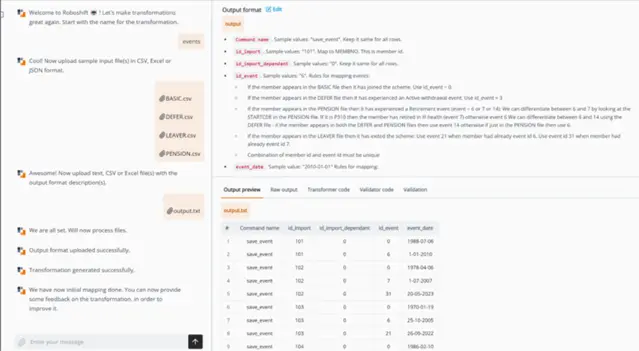Every few years, tech latches onto its new golden child. Vendors rebrand overnight, decks are filled with vague diagrams, and consultants start selling roadmaps before a single line of code is written. We've seen it with "digital transformation," "big data," "blockchain," and now—"AI agents" and the "agentic approach".
So it’s fair to ask: is this just another well-dressed marketing ploy? A shiny new excuse to bill clients for vague innovation strategies?
Often, yes. But not always. And certainly not when the conversation-first, agentic model is implemented with a clear goal, solid engineering, and user-centric thinking. Done right, it delivers real change. And companies that understand this early will leave the skeptical ones playing catch-up.
The consulting gold rush around AI agents
With the explosion of LLMs, every product suddenly wants to wear the "agent" label. Decks promise autonomy and proactivity. Landing pages tease AI that "just works."
The reality? Many of these are half-baked concepts. They treat the LLM as a silver bullet, ignore the hard questions (integration, fallback logic, data security), and ship little more than a chatbot embedded in a UI shell.
No wonder it feels like a bandwagon. The noise can drown out genuine progress. But under all the hand-waving, a real shift is happening: users expect their software to speak human. That’s not hype. That’s an observable behavior change.
Why the agentic model matters now
The agentic approach isn’t about slapping an AI label onto legacy flows, but moving from interface-first thinking to intent-first thinking.
We’ve already adapted to this in everyday life. We don’t read manuals, we search or ask. We don’t click through GPS menus, we say the destination. The same principle is creeping into business software. Users want systems that listen, understand, and act.
Instead of forcing users to adapt to software, agentic tools adapt to the user’s goal. Instead of micromanaging steps, users describe outcomes. Agents handle the translation. The result is more natural, more intuitive, and—when implemented well—more productive.
A practical example: Roboshift and no-code agentic ETL
At Blocshop, we walk the walk and build systems, and our latest product, Roboshift, is one of the clearest examples of what the agentic model looks like in practice.
Roboshift is an AI-powered platform that automates no-code transformation and cleansing of structured data—across formats like CSV, Excel, SQL, and JSON. Instead of forcing users to clean data manually or write complex scripts, it provides an intuitive interface that guides users through intelligent mappings, conversions, and anomaly detection.

The agentic element is in how the platform bridges user intent and execution: it doesn’t ask the user to build the pipeline; it helps assemble and maintain it using smart defaults and adaptive logic. Roboshift can integrate with widely used tools, allowing users to connect these services, define logic, clean data, and run recurring operations without engineering bottlenecks. Users simply describe what they need, such as:
"Clean up incoming CSVs of daily transaction logs by converting dates to ISO format and flagging rows with empty IBANs." or
"Standardize multiple Excel files with different header naming conventions into a single SQL-ready format."
Roboshift intelligently detects data patterns, proposes mappings, and applies cleansing rules, such as filling missing values, unifying currency formats, or trimming duplicates. Its conversational interface supports guided configuration, reducing friction for non-technical teams who need to normalize data before loading it into BI tools, CRMs, or compliance dashboards.
Why companies need real guidance
Anyone can prototype a chatbot. Building a reliable agentic system? That’s harder.
You need to design for ambiguity, edge cases, and business logic. You need to know when the agent should act autonomously and when it needs human input. You need integration with systems that weren’t built for conversation-first workflows. And most of all, you need trust—users must believe the system will do what they mean, not just what they said.
Blocshop brings that kind of experience. Our work spans from architecture to design, from prototype to production. We know how to build agentic software that doesn’t just look good in a demo, but holds up in day-to-day use. Roboshift shows that this is achievable now—not someday.
People won’t adopt software they can’t predict. An agent that doesn’t explain itself—or worse, makes silent mistakes—will erode trust instantly. That’s why real agentic design is transparent. It confirms actions. It shows reasoning. It adapts when the user pushes back. It respects boundaries.
If your team is still designing static flows while your users are typing freeform prompts, the gap is growing.
If you're ready to meet them halfway—and do it efficiently—LET'S TALK.